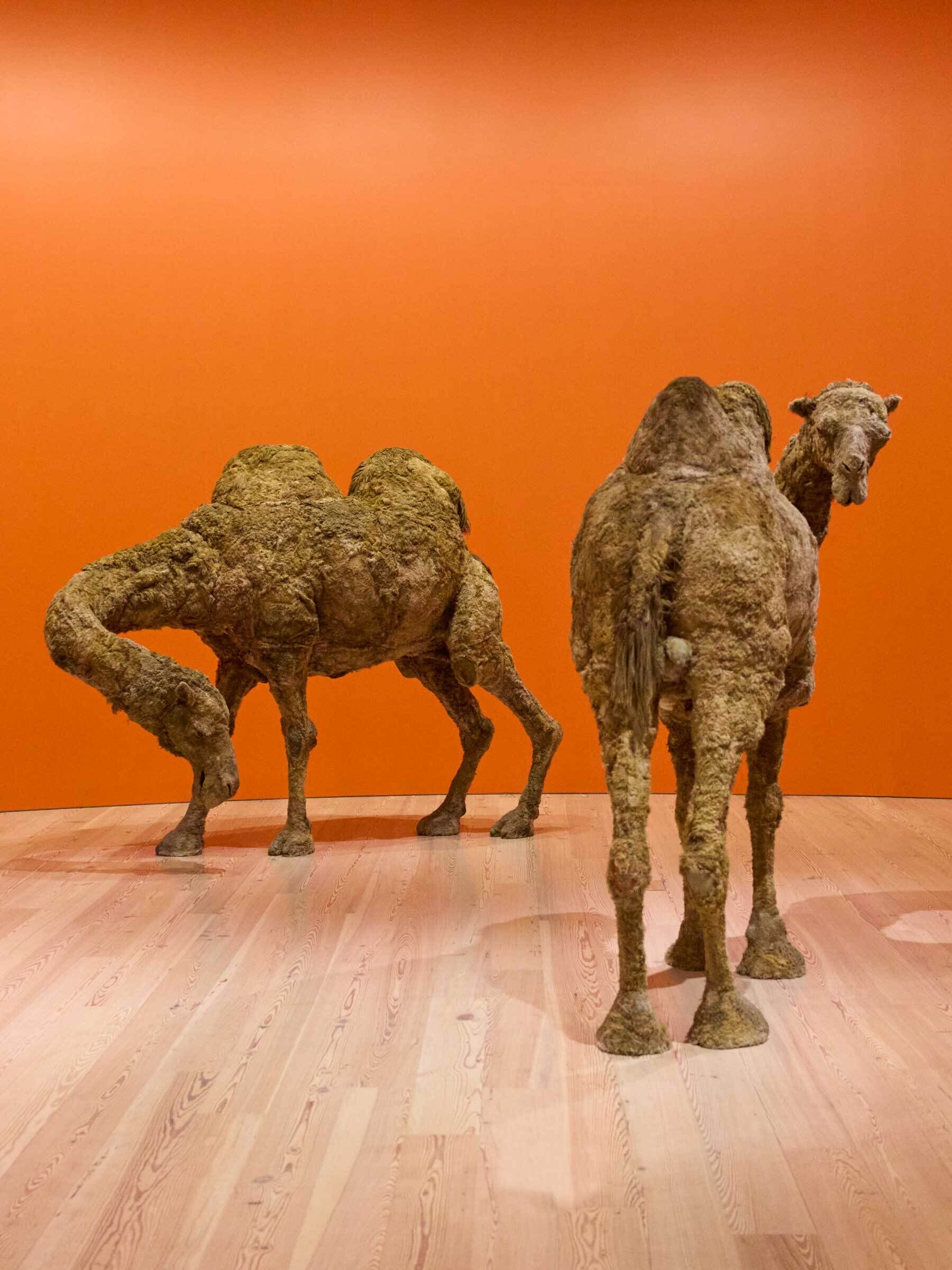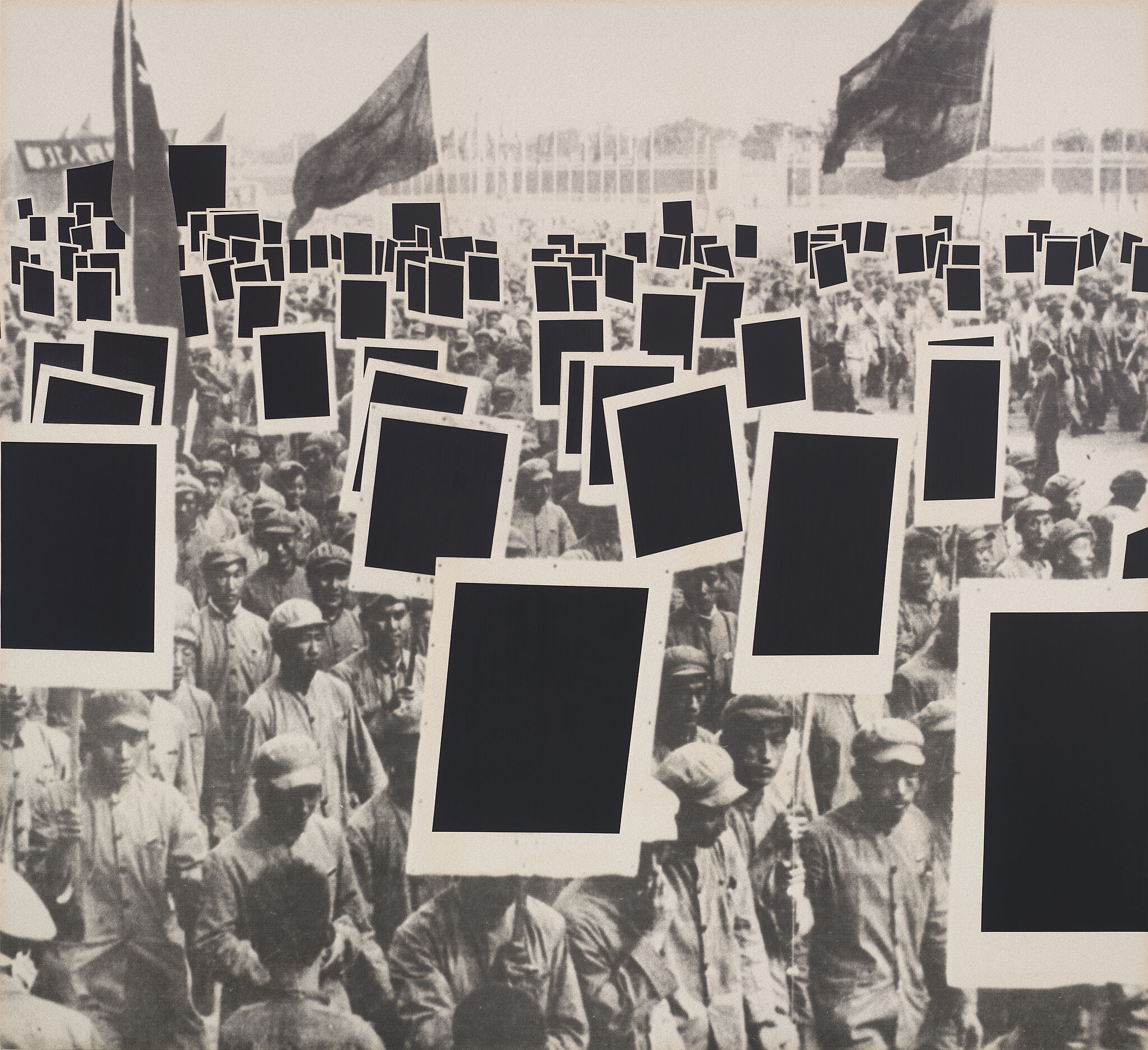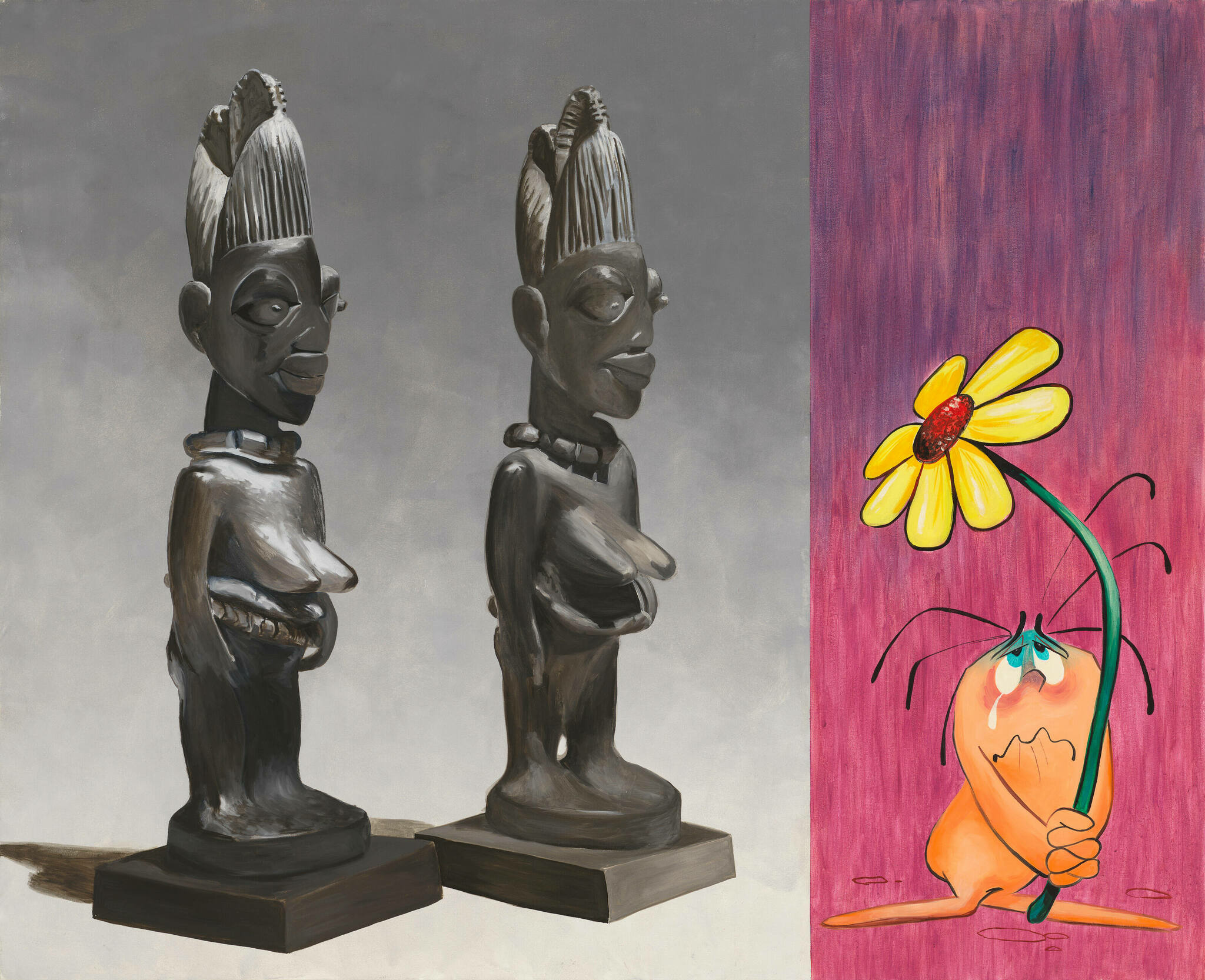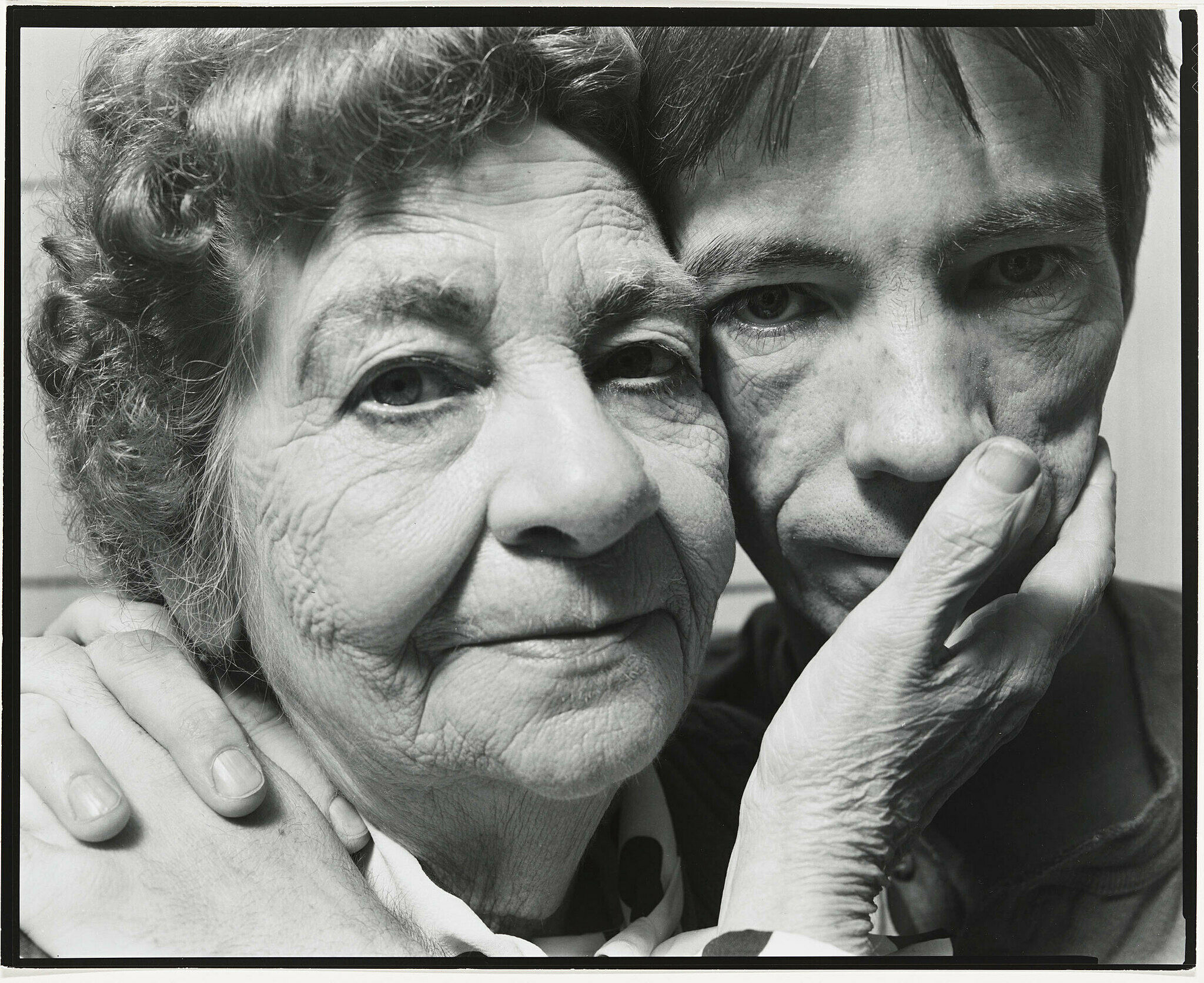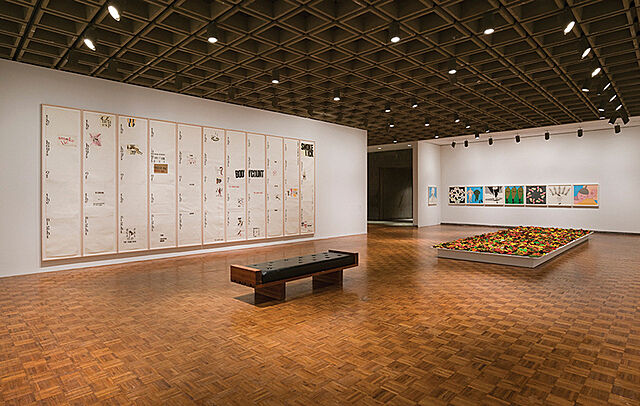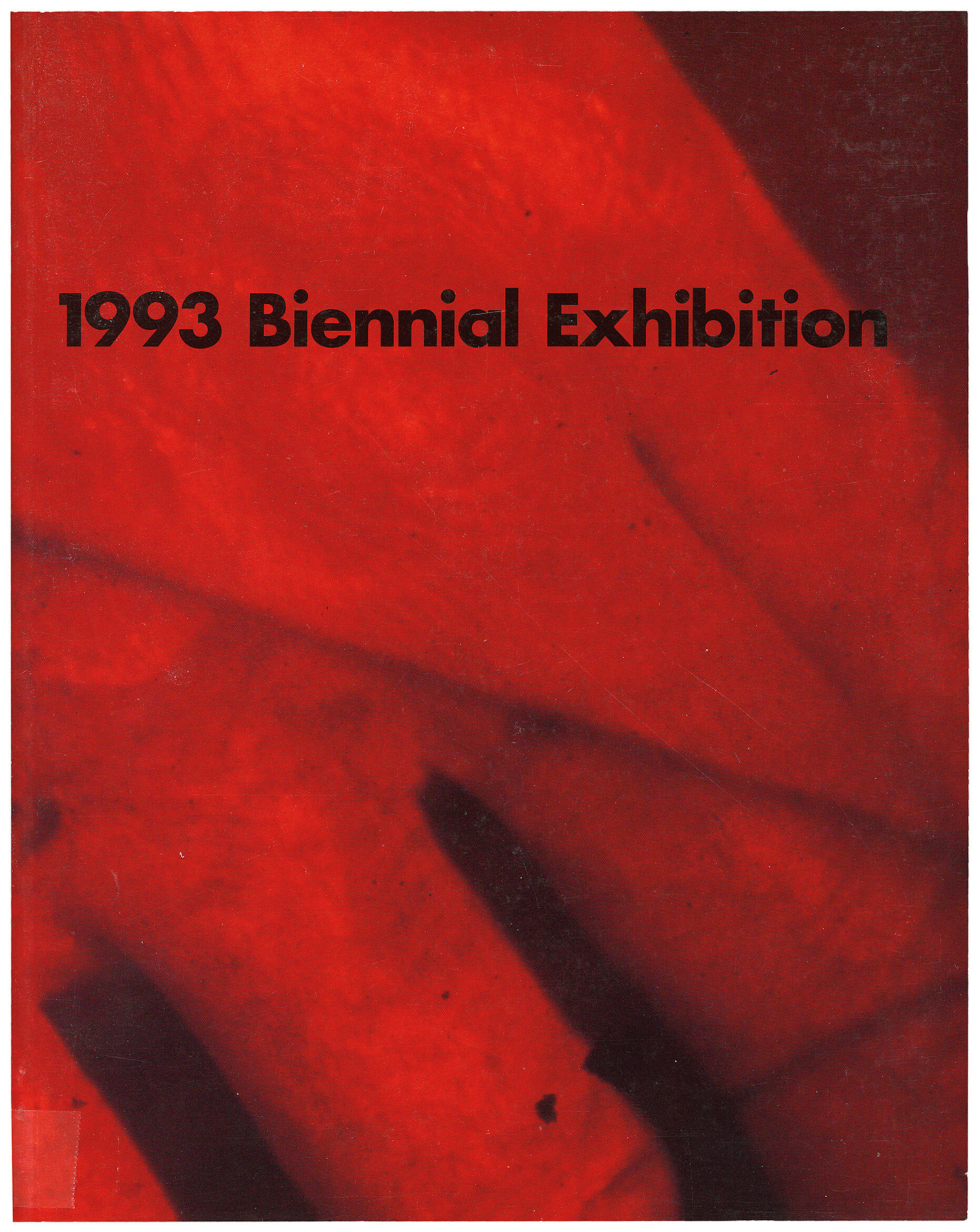Nancy Spero
1926–2009
Nancy Spero’s distinctive form of politically engaged art combines a wide-ranging social and cultural critique with craft-based techniques, historical references, poetic and personal text, and a loose figurative style. Trained at the Art Institute of Chicago and the École des Beaux-Arts in Paris, Spero began to produce work that was pointedly political in 1965, in the midst of the Vietnam War. By the end of the 1960s she had also become active in the Art Workers Coalition and Women Artists in Revolution, groups that protested the discriminatory practices of New York cultural institutions. Throughout the 1970s, Spero’s work increasingly reflected feminist concerns, portraying the protagonists of history with female figures, or referencing personal experience through text-based compositions.
Hours of the Night—comprising eleven nine-foot-high, hand-printed and collaged paper panels—is a textual work that recalls a manuscript or scroll, though it eludes linear reading. Phrases such as shoot out and body count suggest the violence and grim political climate that followed the United States’ withdrawal from Vietnam in 1973. Textual fragments such as smoke lick and knife cut hint at more personal events: a fire that damaged Spero’s New York apartment the year the work was made, and a stabbing that injured her husband, the artist Leon Golub. Hours of the Night might suggest a catalogue of night terrors or racing thoughts, but Spero described the piece in more optimistic terms. The work, she stated, was inspired by the Ancient Egyptian Book of the Dead, in which the sun god Ra “travels the underworld each night, but emerges triumphant at dawn each day. This continual battle affirms the future—and the celebration of life.”
Introduction
Nancy Spero (August 24, 1926 – October 18, 2009) was an American visual artist known for her political and feminist paintings and hand pulled prints .
Born in Cleveland, Ohio, Spero lived for much of her life in New York City. She married and collaborated with artist Leon Golub. As both artist and activist, Nancy Spero had a career that spanned fifty years. She is known for her continuous engagement with contemporary political, social, and cultural concerns. Spero chronicled wars and apocalyptic violence as well as articulating visions of ecstatic rebirth and the celebratory cycles of life. Her complex network of collective and individual voices was a catalyst for the creation of her figurative lexicon representing women from prehistory to the present in such epic-scale paintings and collage on paper as Torture of Women (1976), Notes in Time on Women (1979) and The First Language (1981). In 2010, Notes in Time was posthumously reanimated as a digital scroll in the online magazine Triple Canopy. Spero has had a number of retrospective exhibitions at major museums.
Wikidata identifier
Q2731236
Information from Wikipedia, made available under the Creative Commons Attribution-ShareAlike License . Accessed November 21, 2025.
Country of birth
United States
Roles
Artist, art critic, art theorist, calligrapher, collagist, feminist, graphic artist, installation artist, manufacturer, painter, professor, scenographer, sculptor
ULAN identifier
500060537
Names
Nancy Spero
Information from the Getty Research Institute's Union List of Artist Names ® (ULAN), made available under the ODC Attribution License. Accessed November 21, 2025.

